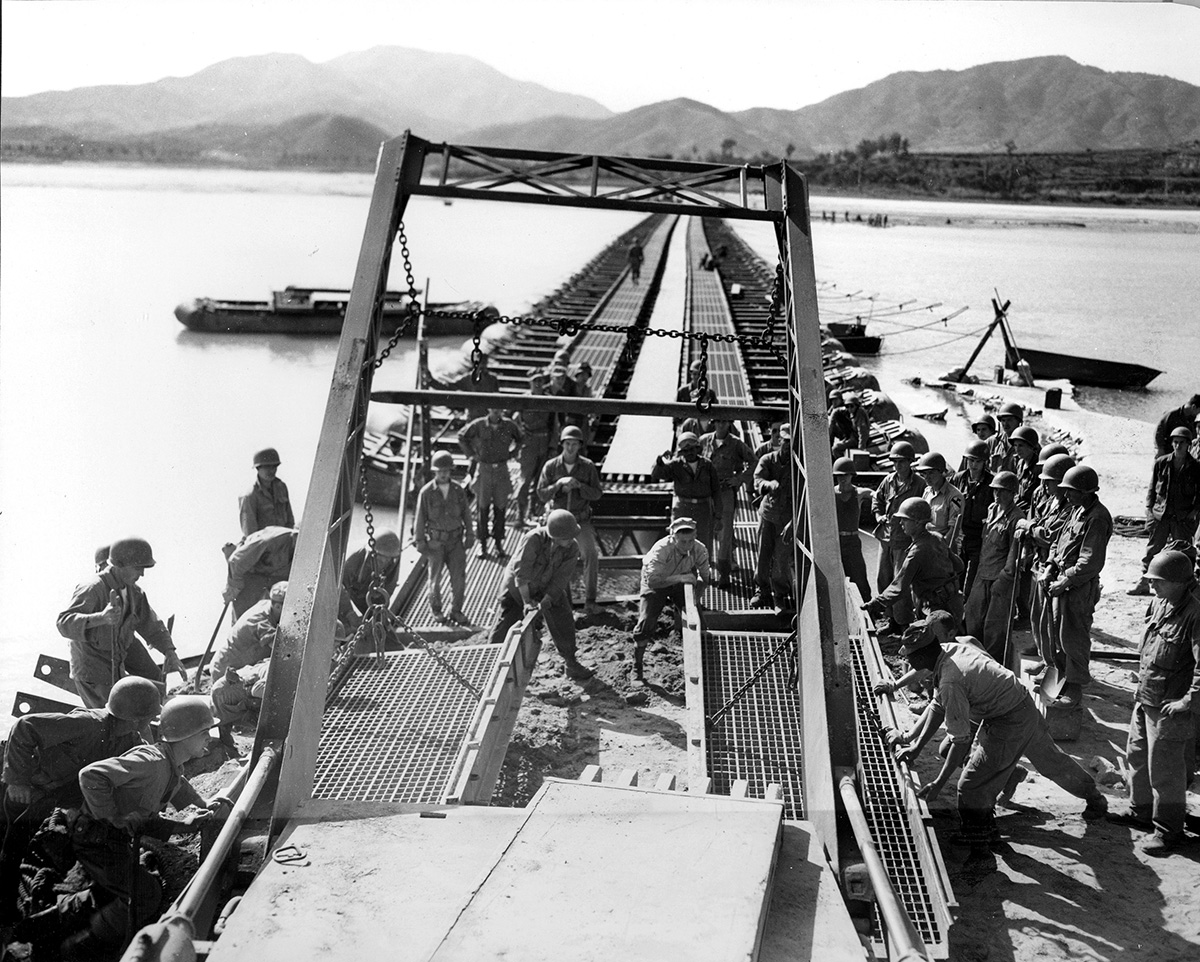 |
Engineers prepare to mine a bridge near the front lines in South Korea, July 1950.
U.S. Army Engineer School, 71-19-27 |
When North Korean forces mounted a surprise attack across the 38th parallel into South Korea on June 25, 1950, they initiated a three-year conflict in some of the most inhospitable terrain the U.S. Army had ever encountered. The Korean Peninsula features steep mountain ranges, narrow valleys, and numerous rivers dividing its landmass. The volatile climate also made warfighting far more arduous. The summers were oppressively hot, the winters bitterly cold, and the monsoon season turned what few roads there were into muddy quagmires and transformed meandering streams into raging torrents.
In conjunction with the difficult terrain and climate, North Korea’s rapid advance at the start of the war also placed a premium on U.S. Army engineer operations. In the opening days of the war, South Korean troops were quickly overwhelmed, but they staged an orderly retreat. Three divisions of American troops stationed in Japan were redeployed to reinforce the South Koreans in July, but this new force, now under the United Nations (UN) Command, was pushed inexorably southward, along with thousands of civilian refugees. Engineers still helped buy the beleaguered defenders valuable time; they destroyed bridges and other vital infrastructure to impede the enemy’s advance, they frequently fought as infantry as the situation grew more desperate, and after UN forces withdrew to the area surrounding the port of Pusan, engineers helped build a defensive perimeter that held against determined enemy assault for a month.
In mid-September the UN Command finally went on the attack with an audacious amphibious invasion deep behind enemy lines at Inchon, and engineers were again in the vanguard building and maintaining roads across twisting mountain passes, constructing temporary bridges, operating ferries, reopening ports, and unloading cargo. The unexpected intervention of Chinese forces in November 1950 posed new challenges for the UN soldiers who had fought all the way to the Chinese border. American engineers once again rebuilt roads and bridges to facilitate a withdrawal to south of the 38th parallel, while at the same time destroying critical facilities and supplies to deny them to the enemy. By July 1951, both sides had fought to a bitter stalemate, and truce talks began. The Korean War would drag on for another two years, but U.S. Army Engineers were unsung heroes, for they helped shape the combat environment that allowed the United States and its allies to fight and negotiate an armistice that has lasted into the next century.
 |
|
 |
Engineers assemble a ponton bridge near Waegwan, Korea, September 22, 1950.
U.S. Army Engineer School, 42-5-86 |
|
Men of the 13th Combat Engineer Battalion repair a road damaged by retreating North Korean forces.
National Archives, RG 111, SC-361232 |
For more stories of the Army Engineer experience in Korea, please see Remembering the “Forgotten War”: U.S. Army Engineer Officers in Korea edited by Barry W. Fowle and John Lonnquest.
* * *
July 2005. Revised June 2021. No. 098.